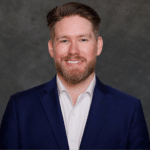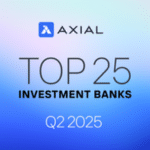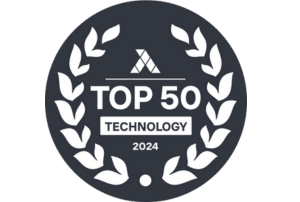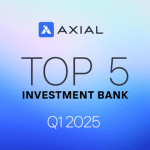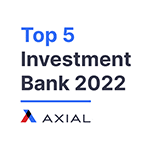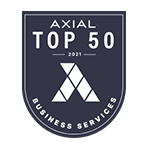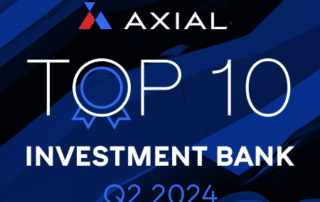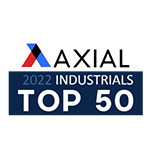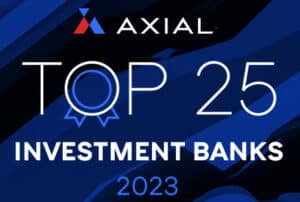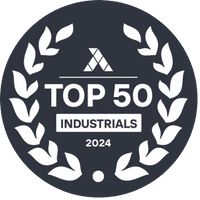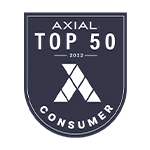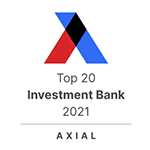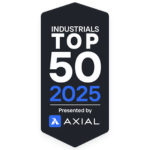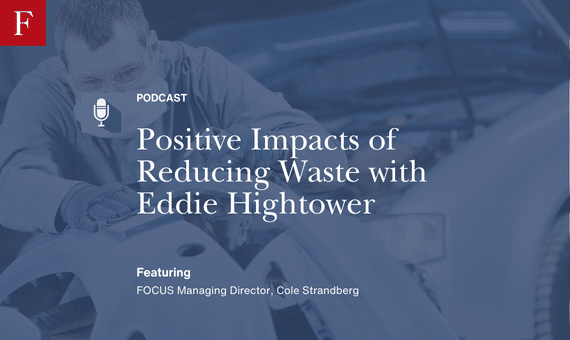
Positive Impacts of Reducing Waste with Eddie Hightower
Cole Strandberg chats with Eddie Hightower, Senior Vice President of Sustainability & Social Responsibility at Caliber Collision, to discuss the steps Caliber is taking to lead the industry toward a more sustainable future. While sustainability in collision repair often brings to mind environmental efforts, it’s much bigger than that. In this episode, we’ll explore Caliber’s sustainability initiatives, how they’re reducing waste, cutting emissions, and ensuring long-term business viability—all while making a positive impact on the communities they serve. Sustainability isn’t just for big MSOs either —independent shops and smaller operators can take meaningful steps toward a more responsible and forward-thinking business model.
Cole Strandberg: Looking forward to a great and important conversation on sustainability. Before we dive in, I read a little bit about your background and who you are at the top of the show, but would love to hear it in your own words.
Eddie Hightower: Sure, yeah. Thanks Cole for the again, thanks for the opportunity today. So I’m Eddie Hightower. I actually lead the sustainability practice here at Caliber Collision, which also includes risk management. I’ve been with the company now almost 10 years. I’m an attorney by training. Don’t hold that against me. And I’ve been doing this role for the last three plus years.
Cole Strandberg: So we’ve spoken a couple times in our pre show call and somehow I missed you were or are an attorney. That’s crazy and fun and different and I think it speaks to the unique ways you look at some of the things that we’re going to talk about today. So diving right in. You know, sustainability is a broad term that might mean different things to different people. From your perspective, how does Caliber sort of define it in the context of collision repair?
Eddie Hightower: Yeah, no, you’re right. Sustainability can be everything. And so without really boiling the ocean and thinking about what we do here at Caliber and thinking about sustainability, we really think about it aligning with our purpose. And we’re a purpose Driven company. And our purpose is to restore the rhythm of your life. It’s all grounded on our core values, the first of which is really to do the right thing, which translates into the sustainability space of being committed to performing this quality repairs for our customers in a really safe and responsible manner. And when I say responsible, that’s about safety of our teammates, safety of our community, safety of our environment.
Cole Strandberg: There’s a lot to touch on here and I want to start, I guess, with the environmental piece. Even though again, a lot of meat on the bone after we address that from an environmental perspective. And being a collision guy and a Caliber alum, I guess isn’t even the right word, but teammate for 10 plus years. How do you view some of the biggest environmental challenges facing the industry today?
Eddie Hightower: Yeah, you know, it’s no secret that that fixing cars takes a lot of energy. And within the space also, we use a lot of different products. Some of them are hazardous waste is what comes out of those products. And so it’s super important to think about our environmental impact, our environmental footprint and all facets of the work that we do.
Cole Strandberg: So we’re going to get into some of Caliber’s sustainability initiatives. Going to be the bulk of our conversation, in all likelihood. But before we do that, taking this holistic view of the industry, how do you view the role of major consolidators like Caliber, not necessarily Caliber, in pushing some of these sustainability initiatives for forward?
Eddie Hightower: Yeah, I think that companies like us, you know, of our size and our reach across the industry, I believe that we have a real special responsibility to not only do the right thing ourselves, but to really set the standard and show others the way of being an environmentally responsible company, building a sustainable business and really caring for the environment that we’re in. That includes the people that we impact, our own teammates and everyone we serve.
Cole Strandberg: There’s an element of selflessness to sustainability, certainly, but it’s also self serving. Right. We don’t want to be the parasite that kills its host, regardless of what that meaning looks like. Like there’s a part of it that we need sustainability for our own financial success. How do you view sustainability from a business case?
Eddie Hightower: Yeah, look, you can do the right things for the sake of doing something right and you can end up bankrupting the company. Right. And so it’s by design that I report up through the chief financial officer. We view that they’re not mutually exclusive, is that you can do the right thing and also have an ROI on, you know, impact your bottom line really positively. And I think that the studies are out there now, and there have been for years of showing over and over again that really focusing on sustainability and building a good, sustainable business model also has a return for your shareholders.
Cole Strandberg: Makes total sense. And I think that’s interesting in putting it in a bit of a different mindset, too. Sustainability. It sort of sounds expensive. A lot of these initiatives, if you’re a single store owner or a smaller group listening to this, it’s like, oof, that sounds tough on the wallet, but the truth is, maybe not. Maybe not. There is some investment that goes into that. But talk to me now through the lens of Caliber and through Eddie here, What are some of the standout initiatives that comes to mind when we’re talking about Caliber’s recent sustainability report?
Eddie Hightower: Yeah, no, I think that you’re exactly right is that, you know, how we look at it and tie it back to our bottom line is I’ll give an example of a really major project that we undertook starting about two years ago is we, of course, you know, that we operate about 1800 collision repair locations across 41 states. And so our footprint, our actual store footprint is quite large. And again, back to our energy usage. We use a lot of energy in what we do to run our centers and also to repair our vehicles. And so one of the things that we looked at was doing an LED lighting retrofit across all of our locations, and we did an economic impact analysis of it. But beyond that, we also looked at the environment that we were creating for our teammates. Being able to see better really equates to a better repair when you can see exactly what you’re doing, have a better sight as to the repairs that need to be done. It really was about creating a great environment for our teammates, which then and in turn attracts other teammates who say, oh, I want to work at that really nice, bright center, not at that dingy. Kind of what people get in their minds when they think about collision repair centers is oftentimes that old, dingy, gross, dirty place. And that’s not at all what we have at Caliber. But in doing the LED lighting retrofit, we not only improve the actual working conditions and the outcomes, but we also contributed to the bottom line. So LED lighting, obviously, as you know, uses a lot less electricity than standard lighting. And so we were able to show the ROI on our bottom line as to doing this this really environmentally friendly and really, when I say environment, it’s outside, like environment, and also inside environment for our teammates.
Cole Strandberg: Very, very interesting. Now, again, sustainability, when we’re talking about and I have to adjust my notes. It shows how quickly you guys are growing. I had 1700 plus. Now we’re talking the 1800 number by the time this might be at 1900. So bear with us, guys. That is.
Eddie Hightower: It’s crazy, I hope, right?
Cole Strandberg: I love the LED example. Any other examples of kind of this combination of reducing waste and improving efficiency that I think gets us toward real sustainability?
Eddie Hightower: Yeah, no, I think we’re always looking for ways that we can reduce our waste and improve the efficiency in the repair process. And when you think about it, you know, in my view, I think it goes all the way back to starting with the accurate estimates. So figuring out, identifying the repairs and the parts that get needed, that are needed. And then we also make a really concerted effort to make sure that we get that vehicle to the right shop. So if it’s a Ford vehicle and we’re working on a Ford car, that we want to make sure we have a Ford certified repair technician who’s working on that vehicle. And then of course, we’re focused on the technicians themselves. We make sure that they have the right training and we do it on an ongoing basis. We invest millions of dollars in ongoing training to keep up with the best practices across our space. And I think that one example of this is really working with our paint suppliers as well, which ties back to being environmentally savvy and smart is working with our paint suppliers to help reduce overspray, for example. That’s one of our big focus areas. That’s good for the environment, it’s good for our bot, really good for our customers who get a great result on the, on the spray.
Cole Strandberg: Makes total sense. Yeah. Talk about a massive way to reduce waste. And I imagine you guys have been spraying water for, for a long time. Kind of another one that comes up often in the independent world of converting to water. I think it’s some little things that can be done to really make a difference in sustainability.
Eddie Hightower: Now you’re exactly right. And I think that, you know, you have to look around your shop and start with those kind of low hanging fruit is what I would look at the processes that you’re engaging in today and think about, you know, what are those incremental changes and it all starts in the small way. And of course we just happen to have a massive footprint, but really it’s a center by center review is what you can do. And you look at those opportunities within your own shop. Soon you’ll have a list of things that could be and then you’ll figure out the financial impact of them, the impact on the teammates and the impact on your customers. And before you know it, you’ll have a sustainability roadmap, I’m pretty sure.
Cole Strandberg: There you go. Absolutely. If the business case calls for it. There’s this mindset of wanting to do well by your people, by the environment, whatever that is. A lot of good things to be said there. Now you mentioned your. Your paint partners and reducing overspray to kind of dive a little bit deeper into there. Are there any particular eco friendly materials or repair methods that Caliber is prioritizing today and into the future?
Eddie Hightower: Yeah, I think that. And given your past too, I think we were just talking about this a little bit. You’ll understand this part of it. We’re really looking to increase our use of low bake coatings which would significantly reduce the temperature at which you have to bake a vehicle on the coatings which provides faster drying time, makes the whole operation more efficient and more environmentally friendly while still getting that great result. Because that’s what this is all about too. We want to return our vehicles to our customers in pre accident condition. And that’s what our entire goal is focused on. The other thing that we’re working on in the paint space is using more of the digital color matching and that also reduces mistakes and paint mixing and do overs as you know in paint mixing and also produces a really superior result when you use technology to do that. And again, the key to a lot of these sustainable initiatives is technology.
Cole Strandberg: No question about it. Now we talk about a lot of this is extremely doable at the single store or smaller group level. Obviously Caliber has a different scale, first and biggest organization of its kind. And so there are some different things that I would imagine you guys have to think of that maybe others don’t. And this may be a silly question, but when you’re of the size that you are, is your carbon footprint something that is monitored and if so, how do you view kind of making some changes that can impact that? Some we’ve already spoken about for sure.
Eddie Hightower: Yeah, we actually started our baseline greenhouse gas emissions reporting in 2022 and we did all scopes. So scope one, scope two and scope three. And scope three as you know, is focused on our supply chain. And of course most people scope three emissions, when you are the size that we are, account for the majority of your emissions. Which in case is actually true as well. I believe that we’re the only and the largest multi shop operator that does measure all three of the greenhouse gas emissions in scope and all of the Things that we’ve talked about up to this point, such as LED lighting, retrofit and some other things I haven’t mentioned yet is, you know, we work with an energy utilization management partner to identify opportunities to improve our energy consumption and to be greener in what we’re doing. Some examples of that are we have a nationwide H Vac system maintenance program that makes sure that all of our units are running really efficiently, that the filters are getting changed out. We have what we affectionately call a rip and replace program as well where we identify those older, less efficient H vac units and we replace them with more energy efficient newer models as well. And then we layer on top of that. Something else I’m really proud of is we’ve installed T stats, our smart thermostats across about 81% of our locations. And we’re using SetPoint technology as well to provide a really good environment again for our customers and for our teammates to make sure that they’re cool in the summer and they’re warm in the winter. But at the same time we’re controlling those centrally to make sure that they’re not running when they shouldn’t be running, like when a shop is closed and that they start early in the morning. So you don’t have like take Phoenix for example where someone may walk in in the morning, it’s 115 degrees outside and they turn on the H vac to 70 and you have this big jump, this big spike. So our systems also allow for that pre cooling before anyone comes into the shop. So we don’t really stress out the H vac units. But those are some of the examples of things that we’re seeing the bottom line results and we’re reducing our actual greenhouse emissions and also improving our costs. You know, the one thing that, you know, Cole, that, that we’re acutely aware of energy prices aren’t going down, they’re increasing. So this becomes even more important to us to control costs for us and for our customers. Because that all gets passed on to you and I as when we buy our car insurance every year. Right?
Cole Strandberg: No question about it. And these are all things that seem somewhat approachable at the single store level. These are all things that we can emulate and follow. However, at you mentioned 81% of your locations. By my quick math, that’s almost 1500 stores extrapolated out. That is a massive impact on a lot of things in a lot of different places, which is very, very cool. And we’ve talked a lot about the environmental piece of Sustainability. And I want to probably keep coming back to that, but you mentioned earlier there are other components of this that are very important as well. We also touched on the profitability standpoint and the business case for sustainability. Any information that you can share as to how sustainability efforts affect a shop’s profitability, at least in terms of caliber?
Eddie Hightower: Yeah, you know, so we think about it as sustainability really is, in our view, linked to creating enterprise value. And why we talk about it that way or why we think about it as creating value is because, you know, look at its very, very core. Sustainability is just really good risk management. And so when you’re going to raise capital, when you’re thinking of if you’re a single shop and you’re trying to, you know, sell, you know, to get someone to be interested, to buy you, when they’re looking at you, they’re looking at your risk management practices. When you think about it, they want to see, are you environmentally conscious? What, what is, how’s your equipment? Is your equipment up to date? Are you following all the repair procedures? Are you invested in your teammates so you have a stable workforce? Are you providing benefits to them? What’s the impact on the community? What’s your, you know, all of those things about reputation, do you have any environmental risks? All of those things go into every bit of how you manage your business. If you think about it, if you don’t have these good practices in place, then why do technicians want to come work for you? And in our world, it’s all about the technicians. We really have a shortage of technicians and so every one of them matters to us. And so we want to be the standout. We want to be the ones that’s the employer of choice the technicians want to come to. And all of that goes together. They see a company that cares about its teammates. Like, by the way, we do benefits from day one for all of our teammates as health and welfare benefits and retirement benefits. That’s taking care of your teammates. We talked about having a good work environment, making sure it’s well lit, it’s clean, it’s cared for, that we provide great machinery and the latest technology. We offer training so we can keep everyone’s skills up to date. That also attracts OE partners, especially when you have certifications at your shop. So that’s just again, back to investing in the business. So you, you drive bottom line results. But all of that goes together to tell your sustainability story. And so if I were a banker or if you need to go for a loan, these are the things they’re looking for, they want to see are you a good risk. And that all ties back to are you engaging in what we would call sustainable business practices?
Cole Strandberg: I’m so happy you went there. I mean that is, that is something that you often don’t think about when thinking about sustainability initiatives and how that impacts a lot of the different stakeholders of a collision business. You mentioned certainly potential investors or buyers. Absolutely. You mentioned employees. Absolutely. Huge. And customers as well. But to that customer angle you also mentioned OE partners and I’d further that and mention DRPs and insurance relationships. How do OEs and insurance relationships aka from my perspective, the one of the, one of the, if not the biggest revenue drivers for a collision business, how do they view sustainability?
Eddie Hightower: It’s critical. And so looking at all of the practices that are involved in sustainability, which is really your environmental practices, your, your social practices and your governance practices, how do you run your business? Actually we answer many, many questionnaires from many of our large insurance partners because we are in their supply chain, we’re part of their scope three if you think about it, because they’re sending their, their customers business to us and so they spend a lot of time vetting us and asking us a lot of questions around everything from our environmental practices, our safety practices, right down to our cyber practices practices. Because when you think about it as well, we have customer data and we take really good care of that. We make sure to only collect the minimum amount we need and we take very good care of our cyber practices which then goes back into the equation of are you building a sustainable business, man?
Cole Strandberg: Yeah, so many different rabbit holes we could go down. Sustainability, that word, even my interpretation has sort of changed on what all that means in the collision repair industry and for our businesses. I want to a little bit about some of the workforce and employee components of sustainability and social responsibility as well. But before I do that, some advice for single stores or smaller MSOs. If you’re listening to this and saying, man, I don’t know if we’re sustainable, what should they do? What are some first steps to become focused on sustainability?
Eddie Hightower: I think that where you start a sustainability journey is really to understand what are the material items to your business. And so you look for at its very core, again it’s looking at what are the risks to my business. So looking at the day to day environmental practices that you have, are you taking good care to make sure you have policies and procedures in place to make sure that you’re disposing of your hazardous waste in a responsible way. So that’s a really core one. And is that a material item to your business? It is. We know that in the collision repair space that that is a material item. I’ll put a little plug in for our sustainability report that we published in 2023 is that you’ll find in that report and it’s available on our website. You’ll find in that report what we identified as our material items and how we got there was just like anyone else who does a materiality assessment, which is the start of your sustainability journey, is you ask stakeholders. So you’re going to ask teammates, you’re going to ask your leaders, you’re going to ask your insurance partners, which is what we did as well. We actually interviewed a few of our insurance partners to see what they viewed were our material items. And that just means really important items, things that you need to be focused on. And you’ll see that way up on our list of things is doing safe repairs. That’s one of our key items. The second one is right there with it, a safe work environment. So safe repairs and a safe work environment, two top things that collision repair centers should always be focused on. In my view, they are our material items. And from that, what are the investments you’re going to make? What are those items you’re going to check off the list and make sure you have in place to deliver on those two really material items and then you can go from there. But that’s really where you start, is you ask your stakeholders what’s important to our business and from there you just start, start the plan. You start to work on building out how do we build these sustainable practices into our business?
Cole Strandberg: The sustainability journey. I, I like that term. And from your perspective, where did calibers start and has that journey and the initiatives evolved over that period of, of time?
Eddie Hightower: It has. It started when I started my job. So three years ago. I started our sustainability practice at that time and we resourced it. We actually used a third party consultant to help stand up our practice to help us complete our first materiality assessment. And that’s our roadmap and that’s where we started our journey. So we started by identifying those materials items and then from there we said, okay, what do we need to put in place from a policy and practice perspective? What do we already have, by the way? I’ll give A little secret out there is that you may find out, especially if you’re just doing this for the first time, you may find that you have a lot of these things in place that’s what I found when I started this, this off was that we don’t call it sustainability necessarily, but a lot of people’s day jobs were actually driving sustainable business practices like over in our supply chain. I’d give a great example of the waterborne paints. That wasn’t my idea, but that’s something that they were doing and continue to expand into our business because it made good business sense and was environmentally friendly. Well, I was able to capture that and tell the story in a sustainability way. And so you may be surprised that many of the things that you’re doing right now are really a part of a sustainability plan.
Cole Strandberg: I love to hear it. And I’ll be sure to include the sustainability report that you guys put out in the show notes for anybody who wants to check that out. I highly recommend it. It’s not only a great story of what Eddie and his team are doing and have done, but it’s a great roadmap too for what you can do in your shop and in your organization as well. Obviously Eddie, over the last three years there’s been some evolution in your sustainability goals. If you were to break out the crystal ball and say, hey, five or ten years from now, what’s this report going to look like and how will your sustainability initiatives evolve? If you have to guess for the.
Eddie Hightower: Future, Yeah, I think that we’re just getting even more ingrained. I think the sustainability practices more ingrained in our business model. So over time I predict that that’s what going to see is that it’s going to be the first thought, not kind of the afterthought or the also. Also included. I think as the world changes around us and environmental issues like we’ve seen in climate change impacting our businesses. You look in California, the wildfires they had last year, of course it was the hurricanes in the Southeast. The environment is changing around us and it’s impacting especially those of us who have large physical footprints across the United States. So I think that that’s going to take kind of the front seat in deciding where are we going to build buildings? What kind of financial implications does that have? Obviously a lot of people live in Florida and we’re not going to stop building in Florida. And so but what does that mean to us from a financial impact perspective? What do we need to be doing from financial planning way that has a sustainable component to it, but also a real bottom line impact. So I think it’s just going to become increasingly important, especially as we continue to grow over the coming years. So that that’s what I see.
Cole Strandberg: I love it. Could not agree more. And it makes total sense to me. I think most of our listeners would agree as well if they were to put that hat on and really kind of contemplate that future. I think it makes total sense. A couple components of sustainability I’ve kept you away from here today for this exact reason to kind of start to wrap the con conversation around that. And that is both workforce development and social responsibility. And I want to talk about both of those. And we’ve touched on each of them slightly. But beyond the environmental efforts, what is Caliber doing to really promote social responsibility in the industry?
Eddie Hightower: Yeah, so a couple of things that I would really bring to the forefront here on this is that we for many years have had a really strong commitment to our communities. And that’s also in our sustainability report where we report out what has been our impact, especially over the last years. Some things that we really like to align around is our unique nature of the business that we’re in, being in the transportation sector and specifically the automotive part of the transportation sector. So we started to think about, well, what, what is something really unique that we can do that involves our teammates, they can be really hands on with. And so that’s one of the components of our giving back to our communities is participating in the Recycled Rides program from nabc. And so we are just looking to continue to expand that program. It’s something if you’ve ever seen one of these car gifting. We gift the recycled rides and these are our cars that are donated by our insurance partners and that our technicians actually bring back to life. So they restore them to drivable condition and then we donate them to first responders or veterans who are in need of transportation. And we’ve been doing this for a number of years and we’re looking to even further expand it this year. But if you’ve ever seen one of these ceremonies, it’s really, you know, there’s not a dry eye in the house at all of these. And again, that’s something that’s unique to our business and unique. Something unique that we can contribute. We also, I’ll give an example, another one of in the wake of the hurricanes that impacted the southeastern United States last year, we had a regional driven mountain strong fundraising effort. So those are teammates who came up with this idea of helping the communities that they serve. And that’s been first and foremost for our business for a very long time, is realizing that we are not only just serving the community, we live and work in These communities. And so we like to make sure that our community impact efforts really, really keep that in mind. Last year in our annual food drive, that’s one that we’ve had for many years also, as we raised money for local food banks, that was the equivalent of providing 5 million meals to the communities that we live and work in. And again, that’s something that our teammates are heavily involved in raising the money, and then they’re a part of the gifting as well, because we actually do fund the local food banks with the money. So we don’t, you know, we don’t collect the cans and send the canned food out anywhere. We actually collect the money and distribute it to. I think last year we did about 150 food banks in the local locales where we have our collision centers, because they’re the ones who know how to get the food distributed in their communities. They know the needs of their communities. So that’s something else that we do. And then you touched on something else, which is something I’m very proud of being able to be involved in and really talking about, which is our technician apprenticeship program. And I, you know, we’ve been doing this since the end of 2022, and I am really proud to announce that just in last month, we graduated our 2000th apprentice out of the program. Wow. Yeah.
Cole Strandberg: Very, very cool. Congratulations on that. That’s a program that I just can’t talk about enough. We had Todd Dillender on the show last year, David Dart last month, and always the. The TAP program comes up, and it’s just what a fantastic achievement there. And congratulations to you and the organization on that feat.
Eddie Hightower: Yeah, it is. And I’m so proud to be able to. To really focus on building the support for it and finding donors. You know, here in Texas, the Texas Workforce Commission has been an amazing partner of ours. We actually were fortunate enough to get a grant in 2023 because they identified the collision repair technicians were a need in Texas to develop. And so they were funding programs like ours to fill those jobs. And, you know, I talk about as pathways to prosperity. These people participating in our program, they graduate from the program as, you know, with a life skill. They. They are able to go anywhere they want. And these technicians, once you get skilled, you can make a really good living. And I hate to say that that’s a. A dark little secret that people don’t realize, because again, they think of people working with their hands and the skilled trades, and they don’t realize that you can make a really great living. And that it’s a job that you’re not going to run out of. AI is not going to replace a collision repair technician. It’s just not. And so we’ll always need collision repair technicians to work on vehicles when.
Cole Strandberg: I hope we stop keeping that a secret. Right. I think everyone benefits by shouting that fact from the rooftop. And it is a fact. You can absolutely crush it in this industry by becoming good at what you do. And a couple of these programs are a fantastic way to get that started and make that happen, and I love it. But, you know, the people component of sustainability is so fascinating because I think you realize it, the industry realizes it. The biggest immediate threat to this industry’s sustainability is the right people getting them and keeping them. And so these programs are a great step in that direction.
Eddie Hightower: Yeah, absolutely. And really skilled trades in general woke up this week, as we often do, and we see people being laid off by the thousands in the technology industry. And it seems like you can’t look at a business paper in the morning and not see some bank, some technology company just laid off 5,000, 10,000 people. Well, that’s not happening in our industry. We’re not laying. We’re growing. And we don’t have enough people coming into our industry. And so that’s why this program is so important, not just for caliber, but more generally for the industry. And we feel that we’re doing our part to help, to help do that. You know, I hope that we graduate our 3000th technician sometime next year. That’s what I think our objective is.
Cole Strandberg: Lofty goals. And I love it. And we’re all better for it if you guys hit those marks. So we’re all pulling for you. No question about it. You’ve been extremely generous with your time, Eddie, and I appreciate it. You bring this positivity to a potentially complex topic and make it feel really approachable and sustainable, which is a great thing to have. I asked you earlier in the conversation about advice to shop owners looking to start their sustainability journey, and I’d like to finish with a somewhat similar question. And that is, what advice would you give to other shop owners or organizations looking to build a future ready business here as this change continues on into the future?
Eddie Hightower: Yeah, I think first is just the focus. And so no one got into business or starts a business to lose money. And so I think that that’s where you start, is really finding the place to start. And we talked a lot about those, every bit. So if you stand back for a second and look at it, it can seem overwhelming. And to have someone say, hey, let’s build a sustainability program. You can go, wow, you know, you don’t have to do the whole thing. Day 1 Pick an area that you want to focus on and really future proof that part of your business and that could be something like what you can do led lighting, retrofit in your center. Is that something that you can do that changes the environment, changes the impact for your teammates? What else can you do around you that gives you a start? And once you get one thing done, the others come a lot easier on that so you don’t have to do the entire sustainability plan day one. And by the way, you will have setbacks. There are things that won’t work. But again, you didn’t get into business to to not win.
Cole Strandberg: Well said man. And again, continuing to make it feel approachable and achievable and really appreciate the insights you have. As I mentioned, I will go ahead and include a link to the sustainability report in the show notes. Make that easy for everybody. For folks who do want to learn more about sustainability, any resources for them to do that?
Eddie Hightower: Well, I’m happy to be a resource. I’m out on LinkedIn so feel free to connect with me out there. I’ve had a lot of connections out there and then happy to share any links you’ll see in the report. Once I look at our report, it’s a pretty good roadmap I think, and we do talk about our roadmap in there, but just generally, again I think that’s a good place to start and I’m available for any questions anyone might have.
Cole Strandberg: Greatly appreciate that and I’ll go ahead and include a link to your LinkedIn in the show notes as well to make that easy for folks. So expect those connections request to just blow up here. Careful what you wish for. I sort of kid, but really do appreciate it. Eddie, thank you so much for joining us here on the Collision Vision and look forward to staying in touch.
Listen and Follow The Collision Vision.

